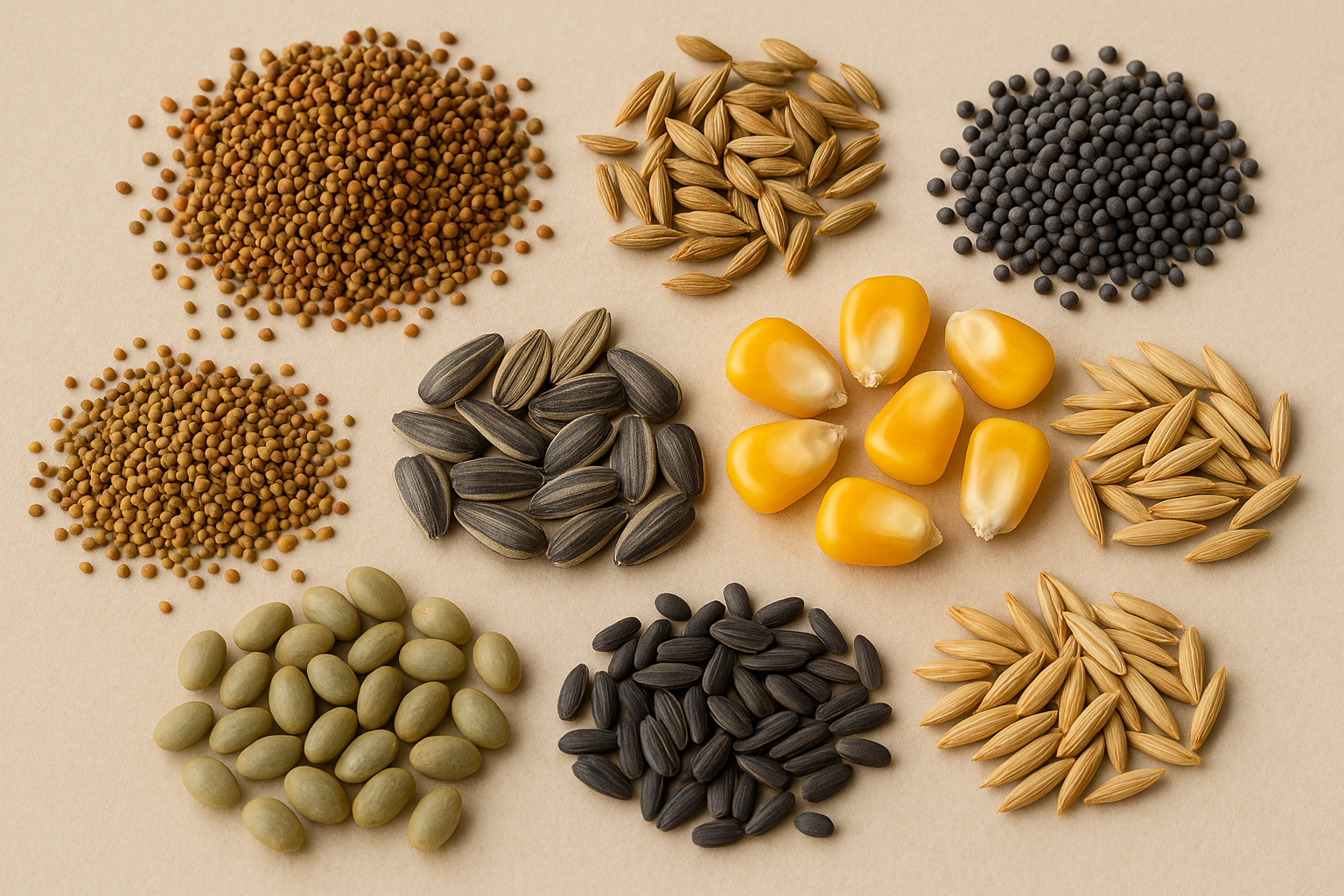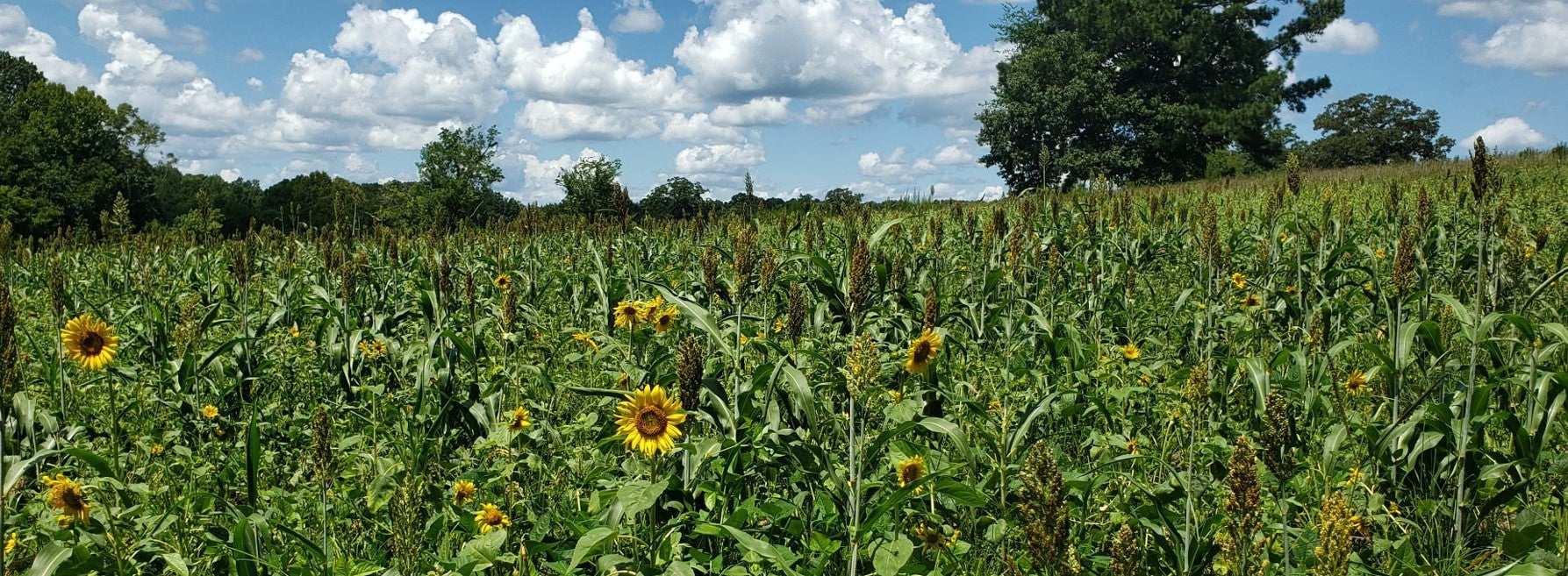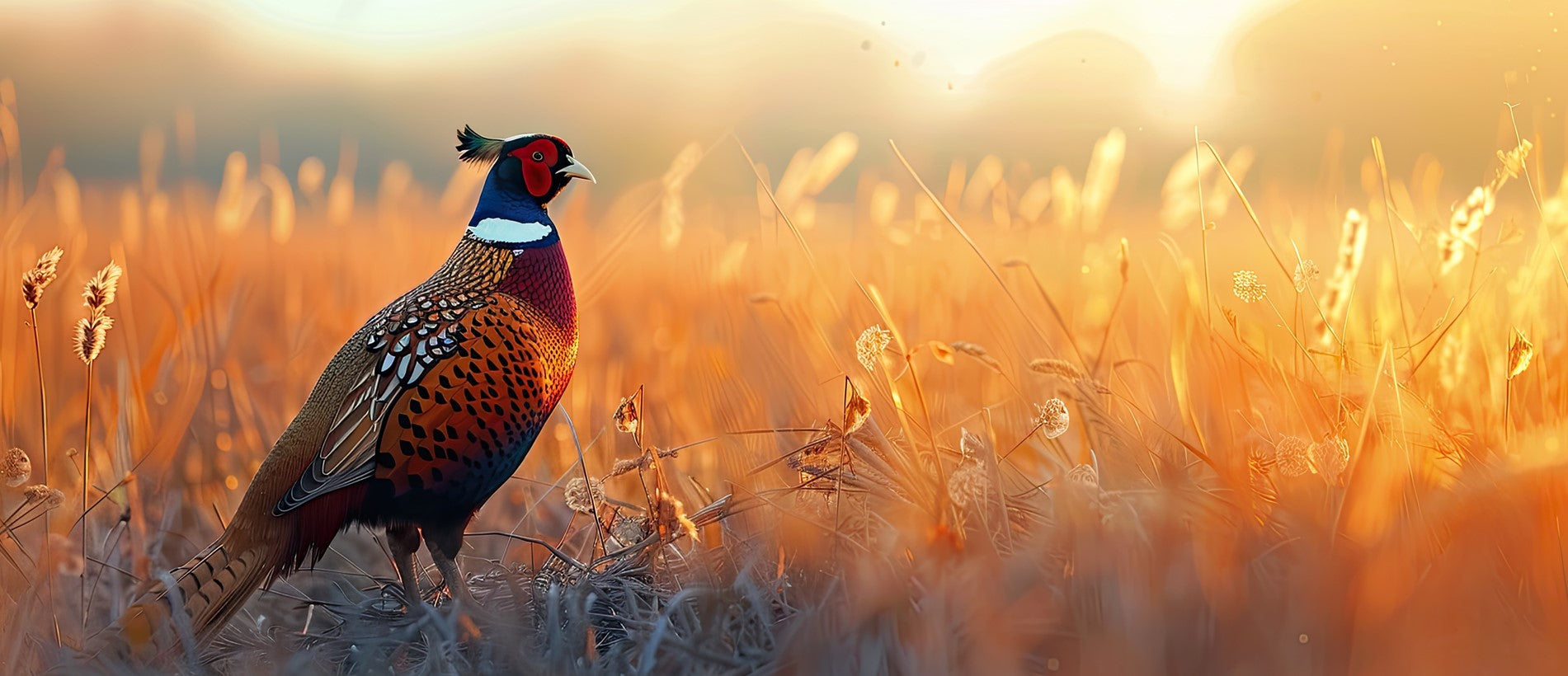The Perfect, Private, and Plain Hunting Plot
One late afternoon in central Mississippi I was sitting in one of my favorite food plots hidden deep in the pine jungles of leased timber company land. With less than thirty minutes of shooting light a group of does entered nervously in the upper end of the food plot. They only took a few bites of “greens” threw their heads up and hurried out of the field. The wind was in my face, which caused me to believe that there was a buck of some kind close by. Several young bucks had been seen earlier in the season doing some vain chasing. Now it was the last day of December, meaning it’s the beginning of the rut in the Deep South, and time for the big boys to start walking. I quickly took out my grunt call and started simulating a buck chasing a doe. Almost instantly I heard what sounded like an elephant coming through the thick cover heading to the upper end of the field. A mature 6.5-year-old 11-point walked out only 50 yards away. Shortly after the shot I was holding my biggest Mississippi whitetail killed in a food plot I planted months earlier.
It has been over 10 years since that day and I still look up at that big 11 and think, “Thank the Lord for food plots!” As a biologist I can tell you that food plots in general provide supplemental nutrition and energy for deer. As a hunter I will tell you that food plots planted in the fall are for killing deer. We plant them with the mind set that we are helping nourish the deer, knowing full well the true purpose of all that work we put in during late summer and early fall. That is perfectly understandable and okay. Drawing a mature buck into a kill zone while supplying the overall herd with nutrition and energy for the winter, what could be wrong with that? So whatever you want to call them, fall food sources or hunting plots, they play a vital roll in today’s approach to hunting.
In my 20 years of planting food plots designed for hunting, I have concluded that there are only three different types of plots: the perfect plot, the plain plot, and the private plot. The perfect plot is the kind of food plot that every hunter would love to have. This ideal green patch is perfect in size, soil, seed, and site. Hence the perfect plot. The plain plot is what most hunters plant each year. A fair sized plot with average soil planted with run of the mill seed. The private plot is a smaller plot hidden in the bush and is normally hard to get to. We are going to take some time to discuss these three and hopefully help further educate you on food plot implementation and management.
The Perfect Plot: An Ideal Situation In all my dealing with food plots, for the exception of my time on the fertile grounds of the Mississippi River bottom at Tara Wildlife Management, I have planted just a few of what I would call perfect plots. Here are the specifications of the perfect plot:
In all my dealing with food plots, for the exception of my time on the fertile grounds of the Mississippi River bottom at Tara Wildlife Management, I have planted just a few of what I would call perfect plots. Here are the specifications of the perfect plot:
The Size Matters!
The size of these fields needs to be at least an acre, with “the bigger the better” principle being in effect. In a perfect situation, food plots should make up 10 percent of the total land base. I like to suggest putting five percent in summer plots and another five percent in fall plots. When you have the luxury to big open fields it is easier to obtain those acreage requirements. Also, if the field is big enough, you can leave certain summer plots standing. Corn, soybeans, and milo are excellent summer plots to leave standing, and you can plant your fall plots in or around the standing summer plots. The more land you have to plant means the more food you can produce, which means the more deer you can accommodate on your property.
The Soil Matters!
The perfect soil situation has good chemistry. It needs a pH of 6.5 or so and a good balance of nitrogen, phosphorus, and potassium. A simple soil test can tell you where your soil stands chemically. The best way to do this is to take several small samples from different locations within your plot, mix them together, and take the collection to your local soil conservation office. They will provide you with a print out of not only the exact chemical makeup of your soil, and also the exact amount of chemicals that your soil needs to make it perfect.
The perfect soil situation also has good composition. Soil varieties that moderately drain well with little compaction are normally the best. These soils drain well but still hold the adequate moisture most plants need for maximum growth. There is little one can do to change the existing soil in terms of composition that will have any long-term effects. You are basically stuck with what you have. So chose your ground wisely.
The Seed matters!
Since I am a pro-staffer for Tecomate it should be clear the importance that I put on using quality seed. A good quality seed has higher germination rates and the plants they yield are higher in nutrition. They simply grow better and are better for the deer. Tecomate has spent lots of money and lots of hours in the field, as well in the lab, producing the highest quality seed that money can buy. Now I am not going to say that Tecomate is the only seed you can plant to have a perfect plot, but I will say you need to plant the best seed possible in doing so.
The Site matters!
In real estate, having a valuable property is all about location, location, and location. The same is in effect here. A food plot can be perfect in all other factors and be in a terrible location for deer to adequately use. The perfect plot should be close to sufficient cover where the deer can readily enter and exit while staying within their comfort zone. In other words, the dining room needs to be close to the living room and the bedroom. More deer will frequent these locations during daylight hours, therefore increasing the hunter’s chance in successfully harvesting a mature buck. Food plot location is also important biologically because deer simply use less energy entering and exiting the plot when it is closer to cover. So, if you want to have a perfect plot, spend some time thinking about plot placement before implementing your next food plot.
The Plain Plot: A Common Condition Now we will look briefly at what the average hunter plants each year, the plain plot. We will take same factors that make up the prefect plot and see how the plain plot matches up in size, soil, seed, and site.
Now we will look briefly at what the average hunter plants each year, the plain plot. We will take same factors that make up the prefect plot and see how the plain plot matches up in size, soil, seed, and site.
The Size: These plots are average in size, normally a half acre to an acre. However, I have seen larger plots that fall into this criterion due to other factors.
The Soil: These plots usually are planted in a bad to average soil condition. In most situations the soil is very acidic (low pH) and nutrient deficient. Most hunters never do anything about the pH, such as applying lime, and they fertilize only. The problem with this is if the pH is not corrected the soil will only use a fraction of that expensive fertilizer. This is a waste of money for the hunter and a limitation for the food plot.
The Seed: These plots are planted with average seed or even good seed that becomes just average when put in an average soil situation. Thanks to companies like Tecomate and organizations like QDMA, the amount of available good quality seed can be easily found most anywhere. The seed should not be a factor, however, in most cases hunters opt to use the cheapest seed they can find.
The Site: These plots are normally planted in locations that are easy to get to and do not take much effort to prepare. Very little strategy is used in placing these plots. The mind set is finding an opening of some kind close to a road and plant it.
This is the picture of most food plots planted across deer country America today. Yes these plots grow, and yes they draw deer to the area, and yes big bucks are killed in them each year. However, if hunters will take just a little extra time each year to make these plain plots better, their odds of bagging a trophy buck will greatly increase. The Private Plot: A Hidden Location
The Private Plot: A Hidden Location
These secret green patches have been in the past some of my favorite honey-holes as a hunter. The big 11-pointer I told you about earlier is hanging on my living room wall thanks to a private plot. The characteristics of these hidden plots are not as cut and dry as the perfect plot, but here are two that I think will help.
The Convenience Factor
This is a food plot that is normally deep in the woods and is hard to get to. If the plot is difficult to access because of thick cover, the average hunter will never find it. Also if the plot is only accessible by a long walking distance, the average hunter will never go there.
These plots should never be easy or convenient to get to.
The Confidential Factor
Another characteristic of a private plot is that you do not tell everyone about it. Remember this plot is a secret. These plots can even be close by, but are not noticeable to the average hunter with any visible access roads leading to it. Just keep your mouth shut about it!
Private plots can be planted in roadbeds or in strips where timber has been thinned. They can be planted in old abandoned fields, timber loading zones, and even old home sites. Wherever you can find a big enough opening of at least a quarter acre, you can plant a private plot. These plots normally average a half an acre in size but can be bigger as long as you can keep them hidden.
Here is an example of creating a private plot. Take your tractor or ATV into a field or opening of some kind and disk it up in early summer without cutting a road into it. Early preparation will give the entry path to the plot time to thicken up leaving no evidence of the trail. When planting season comes go back in with just a hand seeder and plant the opening. You may want to go as far as using a rake to scrape the ground and cover the seed. I have done this many times with successful results.
Remember: by keeping these super killing zones confidential and the convenience factor to a minimum and you can also have a successful private plot in your hunting woods this season.
*****
No matter what kind of food plot you plant this year; the rare prefect plot, the usual plain plot, or the secretive private plot, make sure you plant one! I can’t guarantee that you will kill a 150 class 11-pointer. However, I can guarantee that if you do all you can to create the best food plot you can, you will see more deer and, just maybe, that buck of a lifetime.
Happy planting and good luck to you this fall!!
Posted by Mark Newell











Leave a comment